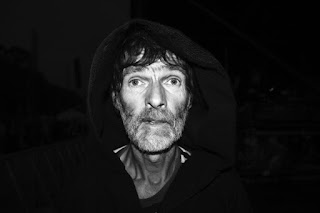
REF: Location, West Lodon.
WHITE VAN MAN ONE'S POV
Crashing sounds, the sight of a man dumping boxes from the rear of a large van. Too dark to make out clearly through the rain.
DIALOGUE
WHITE VAN MAN ONE: Why? (scowling, shrugging)
WHITE VAM MAN TWO: Not your fucking problem! (aggressive, defensive)
WHITE VAN MAN ONE: Kind of is, this shits going to rot here.
WHITE VAM MAN TWO: Yeah well i'm fucked, got to get this shit out. Gotta another house removal tomorrow.
WHITE VAN MAN ONE: Dumping that here too are you?
WHITE VAM MAN TWO: Council will sort it, there problem.
WHITE VAN MAN ONE: Private road, council will do nothing!
WHITE VAM MAN TWO: What do you want? Got some nice stuff in here... (pointing into van)
WHITE VAN MAN ONE: Nothing. Just stop pushing shit out of the back of your van.
WHITE VAN MAN TWO: Pulls rear shutter down, drives away. Piles of boxes, folders, clothes sit soaking up the rain.In this pile of detritus, surely the haul of a person recently passed. I came across these:






I don't think my drum scanner has ever been blessed with such beautiful Kodachromes. There's thousands, mostly Kodachromes. With a smattering of early Ektachromes. A large amount exhibit some mould. All beautifully annotated with dates and locations. This little set date from 1962 to 1966. These are just first pass scans without any colour correction or spotting.
The lead protagonist, Zoe. Appearing a regular intervals, always looking chic.
Who are theses people? Are they dead? Why dump the slides?
I'll let you know if I find out.















